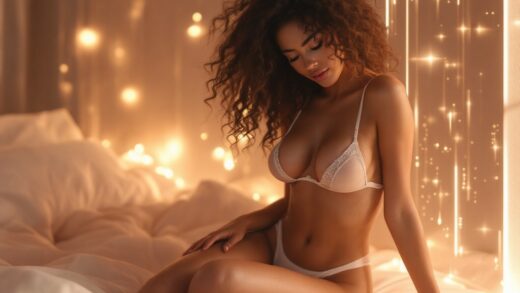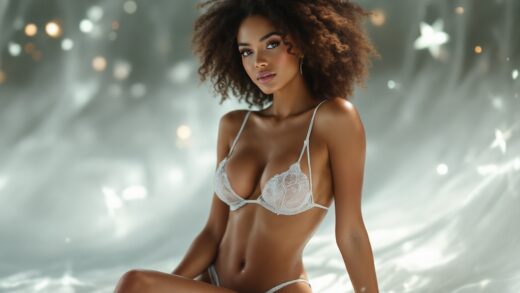As we find ourselves at the brink of a new age in creativity, the dynamic relationship between artificial intelligence (AI) and adult visual art unveils a realm of possibilities that were once unimaginable. This domain has always been associated with various challenges, ranging from societal prejudices to issues of accessibility. Nevertheless, the emergence of AI presents groundbreaking solutions that could revolutionize this genre in enthralling manners. By tapping into the computational prowess of AI, artists can venture into uncharted expressions and enhance their technical artistry. This article delves into the crossroads of technology and creativity, illustrating how AI can amplify, challenge, and transform adult visual art. Embark with us as we dissect the complexities of this evolving terrain and the bright future it holds.

The Present Landscape of Adult Visual Art
Adult visual art has consistently lingered at the edges of the mainstream art scene. Traditional techniques typically highlight the distinct touch of individual artists, yet they also impose considerable restrictions. Artists navigate challenges ranging from strict regulations to the pursuit of recognition in a crowded marketplace. For consumers, engaging with diverse forms of adult art can be daunting due to limited accessibility. Furthermore, financial instability often plagues many artists, who seek acknowledgment while battling the risks of exploitation. Despite this, technology offers a promising path forward, illuminating new opportunities for creativity in this frequently misunderstood sector.
The Function of AI in Artistic Creation
AI has begun to make significant strides across various creative domains, but its role in adult visual art is particularly captivating. With algorithms capable of dissecting extensive datasets, AI is able to produce creations that are both original and visually striking. Ranging from deep learning methods to neural networks, the approaches AI employs to create content are both diverse and multifaceted. This technology can merge artistic styles and themes that human artists may overlook, thus unlocking fresh avenues for expression. As the lines between human ingenuity and machine-generated artistry become increasingly blurred, this landscape brims with potential. A prime example is the rise of AI-generated erotic art, which often challenges long-established perceptions of adult visual artistry.

| AI Technology | Application within Adult Visual Art |
|---|---|
| Machine Learning | Employed to uncover patterns and craft distinctive artwork inspired by existing styles. |
| Neural Networks | Replicates human cognitive processes to generate art that resonates emotionally. |
| Generative Adversarial Networks (GANs) | Utilizes two neural networks to create original pieces, often leading to dazzling creativity. |
The Advantages of AI-Generated Art
The world of AI-generated art is teeming with benefits that enrich the creative journey for both artists and audiences. Below are several key advantages:
- Speed and Efficiency: AI has the capability to generate top-notch visuals in a fraction of the time it would take human creators, enabling swift prototyping and evolving designs.
- Diverse Perspectives: By examining a wide array of styles and cultural influences, AI brings forth a unique amalgamation of viewpoints that elevates the finished artwork.
- Accessibility: AI instruments reduce entry barriers, empowering budding creators in the adult visual sector to try out new techniques and concepts.
Ethical Considerations in AI and Adult Visual Art
While the integration of AI into adult visual art offers profound advantages, several ethical dilemmas warrant careful consideration. The issues surrounding copyright and ownership are particularly significant, as attributing creative works to individual artists becomes increasingly complicated when AI is involved. Authenticity also invites debate; critics contend that algorithm-generated art falls short of the emotional nuance that human artists infuse into their creations. Moreover, the threat of exploitation looms large, with artists potentially encountering unauthorized manipulation or reproduction of their works. A measured approach must be adopted to ensure that innovation occurs in conjunction with ethical principles within the adult art community.
Future Trends in AI and Adult Visual Art
Gazing into the horizon, the amalgamation of AI with adult visual art promises to develop and flourish in exhilarating ways. We can foresee several trends likely to reshape the artistic landscape:
- Increased integration of virtual reality (VR) and augmented reality (AR) technologies to craft immersive experiences that captivate viewers in novel dimensions.
- Heightened collaboration between AI and human artists, nurturing a synergistic environment where creativity can truly thrive.
- Greater public acceptance of AI-generated content, leading to a more mainstream embrace of adult visual art, free from stigma.
Emerging Artists and AI Tools
A fresh wave of creators is now harnessing AI technologies to generate original and innovative adult visual art. Here are a few standout figures within this domain:
- Artist A: Renowned for weaving AI-created images with traditional techniques, forging a multi-layered narrative experience.
- Artist B: Pushing the edges of erotic expression using AI elements to stimulate thought and dialogue.
- Artist C: Employing machine learning frameworks to craft trailblazing pieces that push against societal norms.
Additionally, numerous AI platforms exist for aspiring artists eager to experiment with adult visual art. Some prominent options include:
- DALL-E
- DeepArt
- NVIDIA GauGAN
Conclusion
The convergence of AI and adult visual art unveils an exhilarating realm filled with promise and opportunity. Although technological advancements can unlock new creative avenues, they also present intricate ethical challenges that necessitate thoughtful navigation. As both artists and audiences acclimate to these transformations, maintaining a balance between innovation and ethical accountability will be essential. The path forward may be fraught with hurdles, yet delving into AI’s potential marks a leap toward a brighter, more inclusive future for adult visual art.
FAQ
- What types of AI technologies are commonly utilized in adult visual art?
- Machine learning, neural networks, and generative adversarial networks (GANs) are frequently employed.
- Can art generated by AI truly be considered original?
- The answer varies by perspective; some claim it lacks human emotion, while others view it as a bold new form of originality.
- What ethical considerations should artists bear in mind when incorporating AI?
- Critical issues include copyright concerns, questions of authenticity, and the risk of content or creator exploitation.
- Will AI replace human artists in the realm of adult visual art?
- While AI can assist in artistic creation, human artists contribute emotional depth and unique perspectives that machines cannot emulate.
- How can I begin utilizing AI tools in my own adult visual artwork?
- Explore available platforms, try out various AI tools, and consider merging traditional techniques with digital elements.


